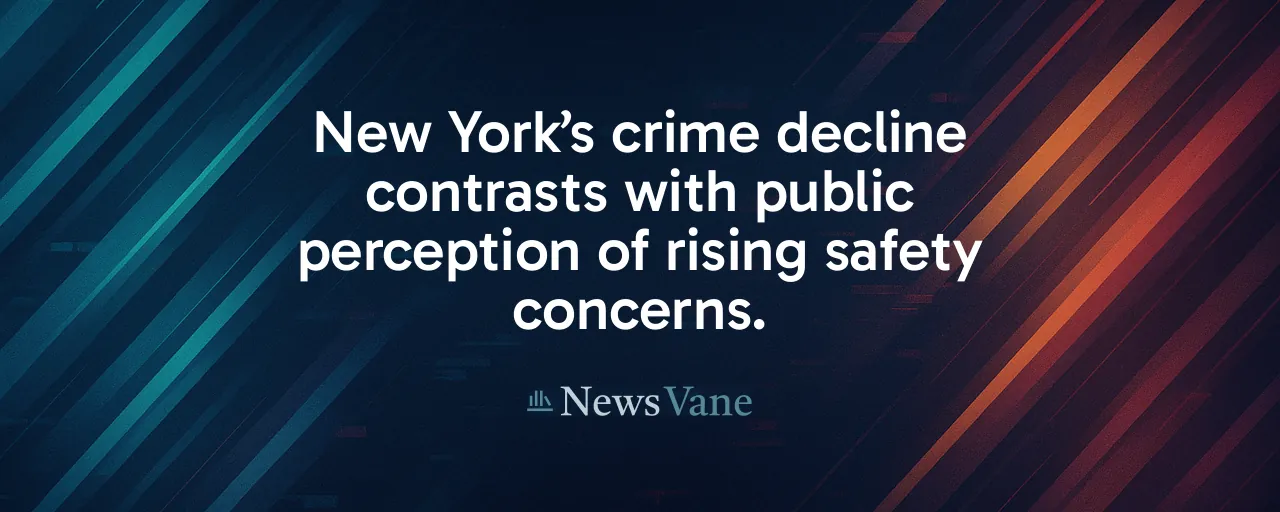A Governor in the Hot Seat
On June 12, 2025, Governor Kathy Hochul faced a U.S. House Committee on Oversight and Government Reform to discuss immigration policy. The hearing carried high stakes, with New York's approach to borders and public safety under intense scrutiny. Hochul aimed to clarify her stance: she supports stronger borders and comprehensive reform while fostering a state that welcomes those who contribute. Her testimony came amid a national conversation marked by sharp divides and heated rhetoric.
The room buzzed with tension. Some committee members, judging by their prior media comments, appeared poised to challenge her with pointed accusations. Hochul's team, anticipating this, brought data to counter what they viewed as distortions. Her appearance underscores a broader question: how does a state like New York balance local priorities with federal expectations in a deeply polarized climate?
Crime Trends: Facts Meet Feelings
Opponents of the administration's policies often paint New York as overrun with crime. Yet the numbers tell a different story. Since Hochul became governor in 2021, New York State has held the lowest homicide rate among the ten most populous states, half the national average. New York City ranks as the second-safest major U.S. city, with murders down 41 percent and shootings down 54 percent in early 2025 compared to 2021. The NYPD reported record-low violent crime for the first five months of the year.
Public sentiment, however, hasn't caught up. National surveys reveal 77 percent of Americans think crime worsened last year, driven by vivid news stories and social media. In New York, rising auto thefts and felonies since 2019 fuel unease, even as homicides plummet. This disconnect shapes immigration debates, where some tie newcomers to crime, though research consistently shows immigrants offend less than native-born residents.
Sanctuary Rules: Safety or Setback?
New York's immigration policies face criticism from those who label it a "sanctuary state" that protects lawbreakers. Hochul's administration emphasizes cooperation with federal agencies like ICE and CBP when individuals are convicted of crimes or linked to serious offenses, such as gang activity or drug trafficking. Since 2021, the state has handed over 1,343 non-citizen inmates to ICE post-sentence, demonstrating targeted collaboration.
New York, like over 200 cities and a dozen states, restricts cooperation in civil immigration cases to build community trust. Studies show sanctuary areas have 35.5 fewer crimes per 10,000 residents than similar non-sanctuary regions, as residents feel safer reporting offenses. Federal critics argue this undermines enforcement, pointing to cases like a 2015 San Francisco homicide. The debate hinges on balancing local safety with federal immigration goals, a tension that remains unresolved.
Strengthening Safety and Borders
Hochul has invested heavily in public safety, committing over $2.6 billion since 2021 to gun violence prevention, subway security, and law enforcement tools. Her 2025 budget allocates $77 million for NYPD subway patrols and $127 million for technologies like drones and license plate readers. Subway crime fell 18 percent in early 2025, and rising ridership suggests growing commuter confidence. New gun-safety laws signed in April 2025 helped cut shootings by 53 percent from pandemic peaks.
As a northern border state, New York faces distinct immigration challenges. Hochul directed $8 million in 2025 to enhance Canada border security, funding state police and surveillance to combat fentanyl trafficking and transnational crime. She's urged federal officials to increase staffing at crossings amid rising irregular entries. Simultaneously, she advocates for the 220,000 asylum seekers arriving in New York City since 2022, pressing for federal aid and faster work permits to support local communities.
Pushing for Immigration Reform
Hochul's testimony highlighted her consistent call for comprehensive immigration reform, a priority across both Biden and Trump administrations. She endorsed a 2025 bipartisan Senate bill that would have provided $20 billion for border security and $1.4 billion for state and local migrant services while tightening asylum processes. Opposition from some House Republicans, driven by political calculations, stalled the measure. Hochul stressed that progress depends on collaboration.
The issue exposes stark divides. A March 2025 Gallup poll found 47 percent of Americans and 84 percent of Republicans favor mass deportations, reflecting views of immigration as a security risk. City leaders and police chiefs, however, emphasize immigrants' economic and social contributions, advocating policies that blend enforcement with inclusion. False narratives, like claims that immigrants fuel violent crime, persist despite evidence of lower crime in high-immigrant areas, clouding the path to consensus.
Charting the Path Forward
New York's policies reflect a delicate balance: robust safety measures paired with support for immigrants. Hochul's investments have driven down crime, and targeted federal cooperation addresses serious offenses, while sanctuary policies aim to foster trust. Rising transit ridership and falling violent crime suggest these efforts resonate with residents, yet national debates remain mired in mistrust and misinformation.
The challenge lies in bridging divides. Partisan narratives often drown out data, making agreement on immigration and safety elusive. New York's approach, blending security with compassion, offers one model, but its success depends on federal support and honest dialogue grounded in evidence over fear.
For New Yorkers, the focus remains practical: safe streets, reliable transit, and communities where all feel secure. Hochul's strategies, debated as they are, aim to deliver this, providing a test case for how states can navigate one of the nation's most contentious issues.
